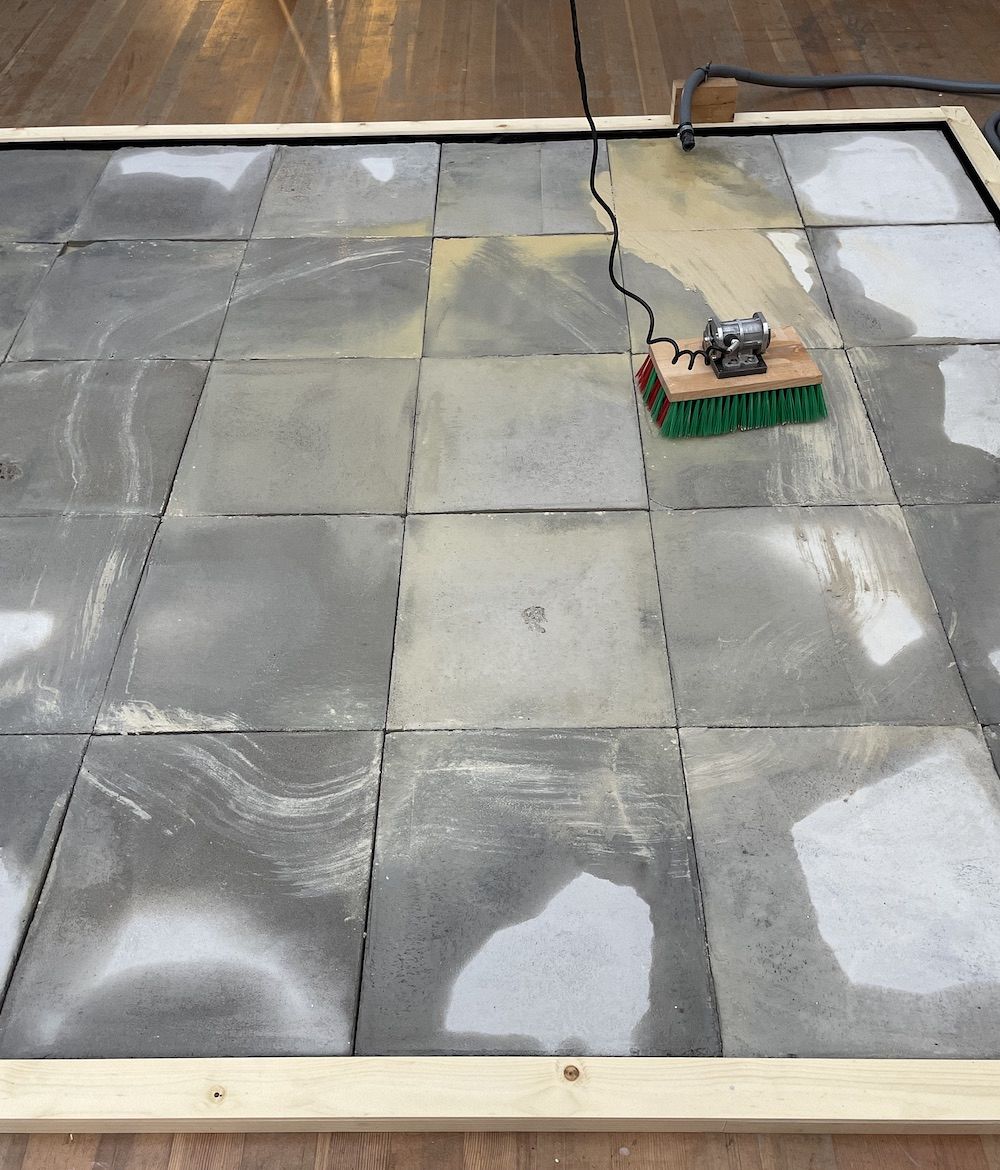
Jacob Wallett
Keywords: Dynamic system, Relations, Motion
jacobwallett.com/
www.instagram.com/hurrayforcaptainspaulding/
30 handmade concrete tiles form a 6x5 grid on the floor. Agitated by a rotating weight, a brush takes a random walk over the grid, evaluating the surface in terms of roughness and slope. When the brush crosses a line it turns spontaneously, as friction causes one side to slow down. The brush can reach every tile, every position of this state space, but in practice some places are reached often, others occasionally, others not at all.
A tank containing an electric pump feeds liquidised clay onto the concrete in a daily cycle. The wet clay is distributed by the brush, spreading, drying, and accumulating over multiple days as the water evaporates. As the clay deposits on the surface the brush must continually find new paths to take, as the very traces of its path come to obstruct regular motion. This work utilises a familiar tool, set in unfamiliar motion, driven in perpetual change by the meeting of unresolved physical processes.
This project continues a long research into the relations between form and function in tools and living things, framed by questions about the conditions of purpose when objects come to perform.